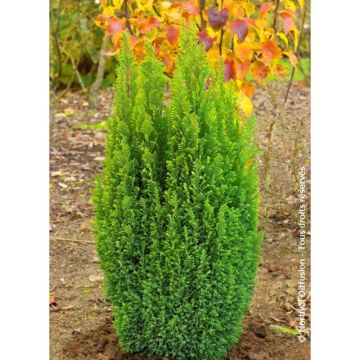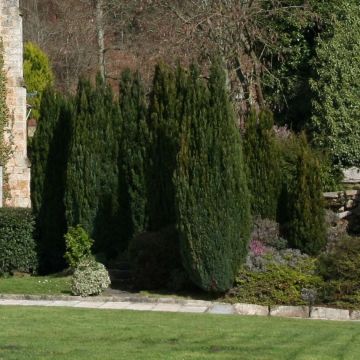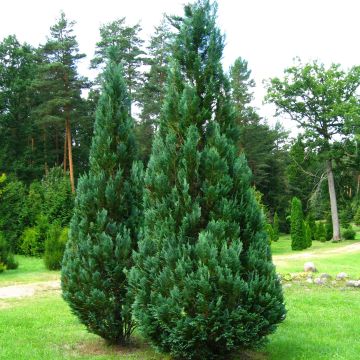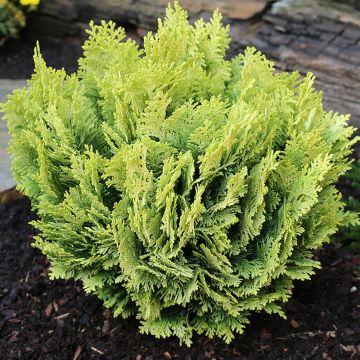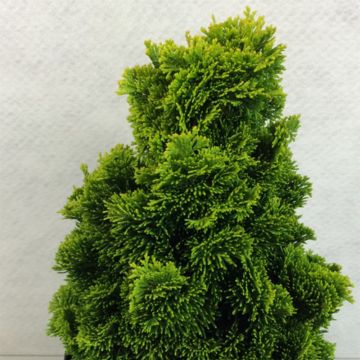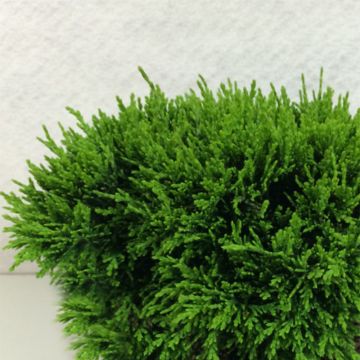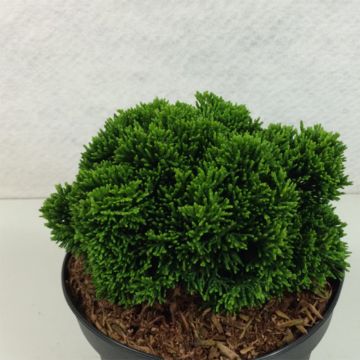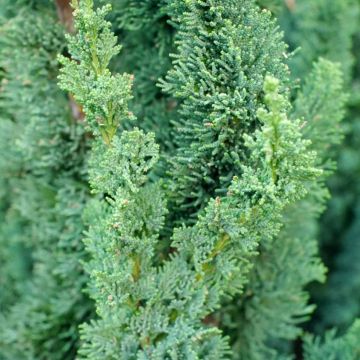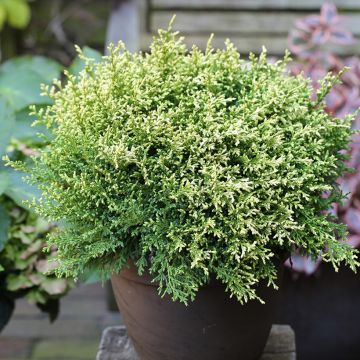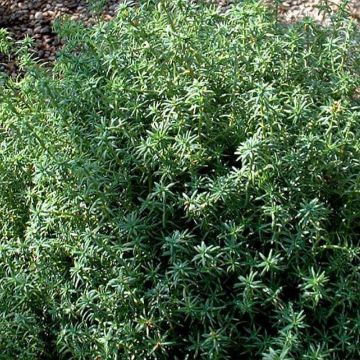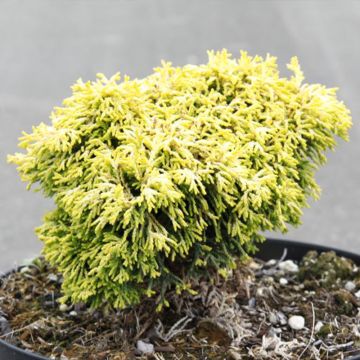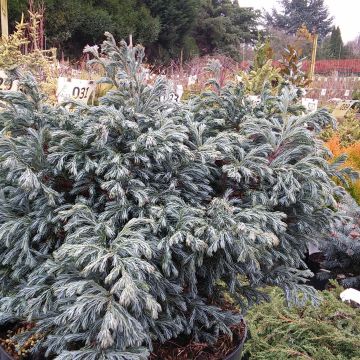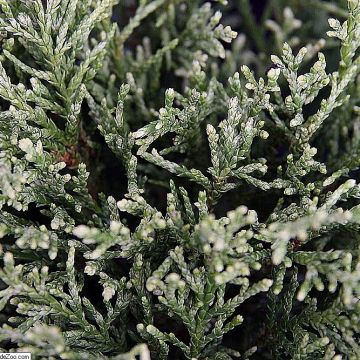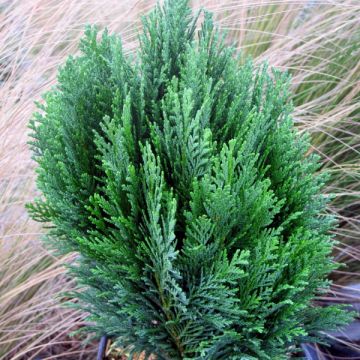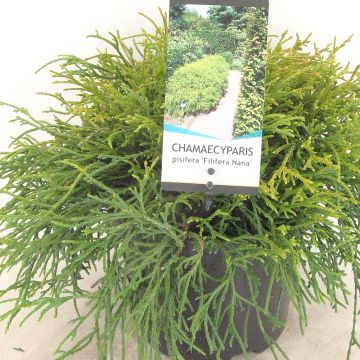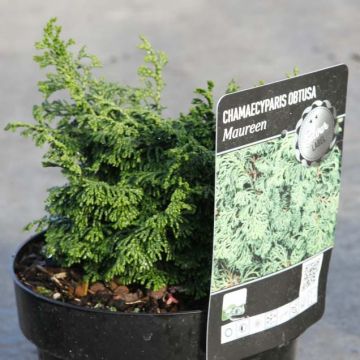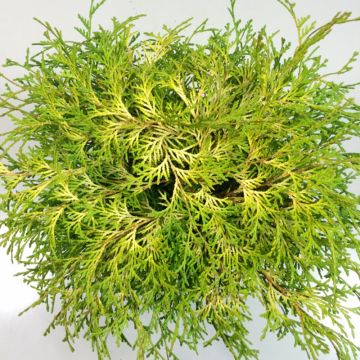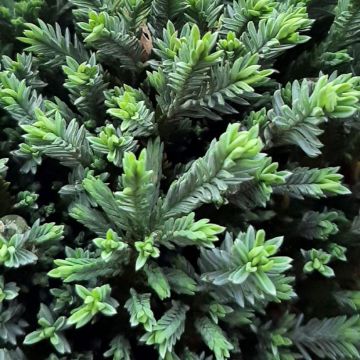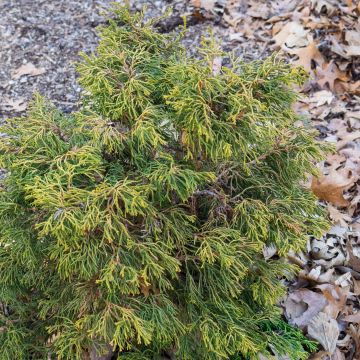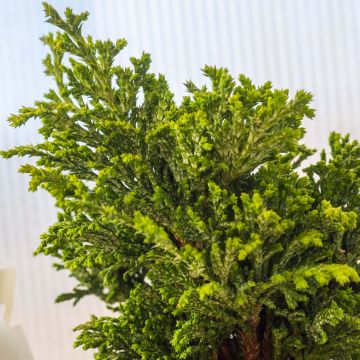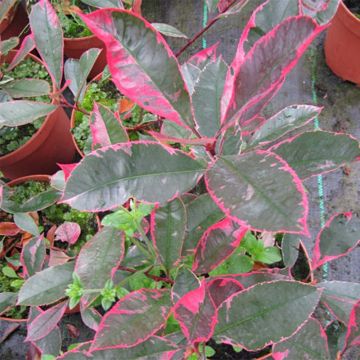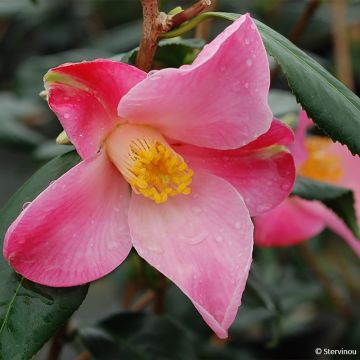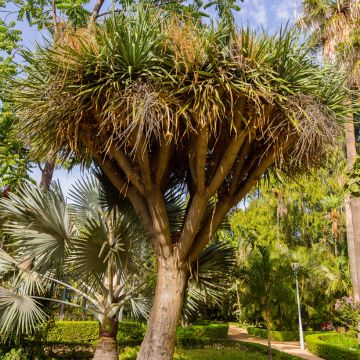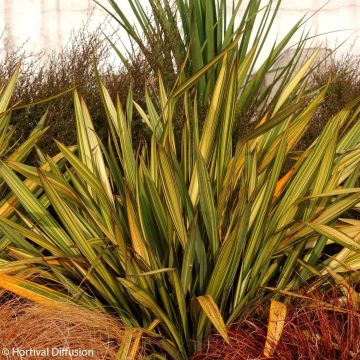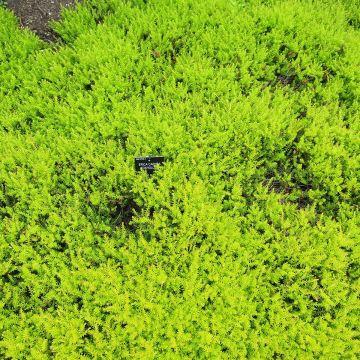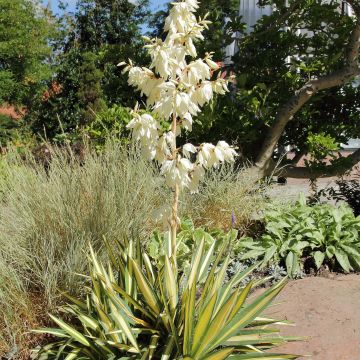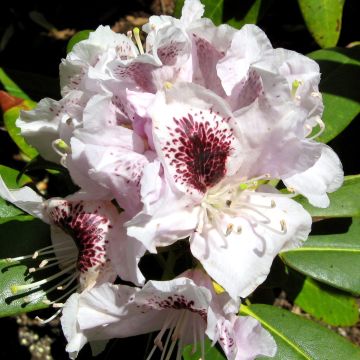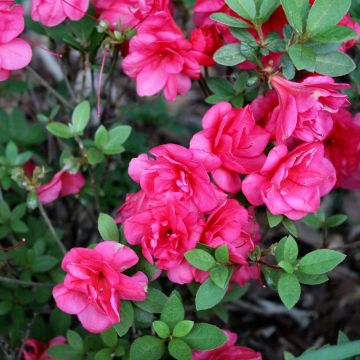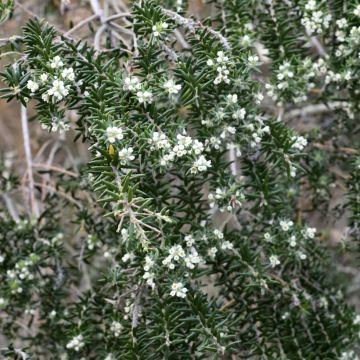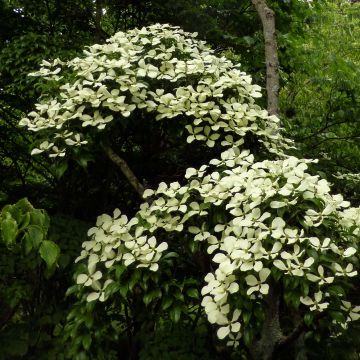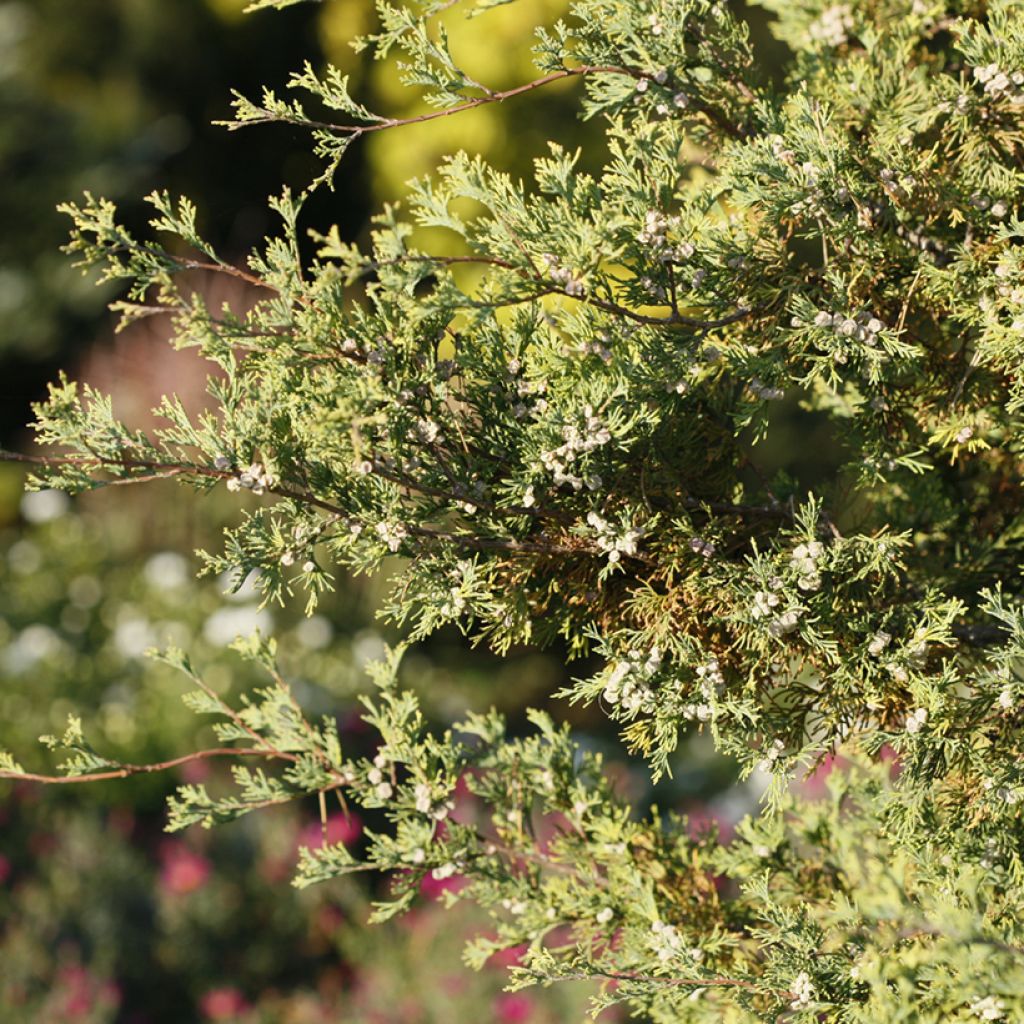

Chamaecyparis thyoides Andelyensis
Chamaecyparis thyoides Andelyensis
Chamaecyparis thyoides Andelyensis
Atlantic White Cedar, Southern White Cedar, White Cedar
Why not try an alternative variety in stock?
View all →This plant carries a 24 months recovery warranty
More information
We guarantee the quality of our plants for a full growing cycle, and will replace at our expense any plant that fails to recover under normal climatic and planting conditions.
From €5.90 for pickup delivery and €6.90 for home delivery
Express home delivery from €8.90.
Does this plant fit my garden?
Set up your Plantfit profile →
Description
The Chamaecyparis thyoides 'Andelyensis' is a variety of Atlantic White Cedar with slow growth and small size, well suited for small spaces. It is a small conifer that particularly enjoys wet and sandy, non-chalky soils, near the sea. When planted as a single specimen, it will form a fairly wide cone, with multiple leading shoots, of a dark blue-green colour, which will take on more or less bronze to violet reflections in winter. This variety produces many bluish cones from a young age.
The Chamaecyparis thyoides is a very hardy species native to the eastern North America, specifically from the Maine Coast to Florida. It belongs to the Cupressaceae family and is also known as the Atlantic White Cypress. In its natural environment, this tree can reach a height of 18 m and has a narrow conical habit. It has given rise to many cultivars, with very variable habits and foliage.
The 'Andelyensis' cultivar forms a plant measuring up to 1 m in height and 30 cm in width after 10 years. Potentially, it will eventually reach a height of 1.60 m to 1.80 m with a base spread of 90 cm to 1 m, after many years of cultivation. This small conifer retains its juvenile foliage in the form of very short thorns, dark green with blue-green reflections, without developing the scaly leaves of the type. Its foliage is very dense. It develops several main branches of unequal sizes. The foliage exposed to frost will take on bronze or violet reflections. This variety produces fruits called cones. When immature, they are a soft blue-gray, somewhat glaucous. They become dark brown as they ripen.
The Chamaecyparis thyoides 'Andelyensis' is a small, hardy and elegant conifer that can be adopted in a small garden, always in light and moist soil, not under intense sunlight. It can also be grown in a container on the terrace. Place it in the centre of a small bed or combine it with other dwarf conifers of different colours and shapes: for example the Canadian Arborvitae 'Danica' which forms a ball of grass green, the Oriental Thuja 'Aurea Nana' in a cone shape, golden, or the Juniperus squamata 'Blue Carpet', a beautiful silvery blue carpet. The architectural qualities of dwarf conifers naturally stand out in the design of a contemporary garden. These plants structurally define a bed for a long time, mark pathways, and border the terrace. They can be combined with ground cover plants like rock cress, silver baskets (Cerastium), as well as flowering shrubs. The key is to play with volumes and colours.
Report an error about the product description
Plant habit
Flowering
Foliage
Botanical data
Chamaecyparis
thyoides
Andelyensis
Cupressaceae
Atlantic White Cedar, Southern White Cedar, White Cedar
Cultivar or hybrid
Other Chamaecyparis
Planting and care
Chamaecyparis thyoides 'Andelyensis' can be planted from September to November and February to June in well-drained, light, neutral or slightly acidic soil that is free of lime and remains cool even in summer. A sandy or humusy soil or a mixture of ericaceous will do just fine. Choose a sunny, cool or partly shady spot, sheltered from prevailing winds. Soak the clumps well before planting. Apply an organic amendment at planting and water copiously for the first few years. Every April, apply a special conifer fertiliser and hoe the soil in summer. This conifer dislikes drought and heat, as well as drying winds. It does not require pruning.
Planting period
Intended location
Care
This item has not been reviewed yet - be the first to leave a review about it.
Evergreen shrubs
Haven't found what you were looking for?
Hardiness is the lowest winter temperature a plant can endure without suffering serious damage or even dying. However, hardiness is affected by location (a sheltered area, such as a patio), protection (winter cover) and soil type (hardiness is improved by well-drained soil).

Photo Sharing Terms & Conditions
In order to encourage gardeners to interact and share their experiences, Promesse de fleurs offers various media enabling content to be uploaded onto its Site - in particular via the ‘Photo sharing’ module.
The User agrees to refrain from:
- Posting any content that is illegal, prejudicial, insulting, racist, inciteful to hatred, revisionist, contrary to public decency, that infringes on privacy or on the privacy rights of third parties, in particular the publicity rights of persons and goods, intellectual property rights, or the right to privacy.
- Submitting content on behalf of a third party;
- Impersonate the identity of a third party and/or publish any personal information about a third party;
In general, the User undertakes to refrain from any unethical behaviour.
All Content (in particular text, comments, files, images, photos, videos, creative works, etc.), which may be subject to property or intellectual property rights, image or other private rights, shall remain the property of the User, subject to the limited rights granted by the terms of the licence granted by Promesse de fleurs as stated below. Users are at liberty to publish or not to publish such Content on the Site, notably via the ‘Photo Sharing’ facility, and accept that this Content shall be made public and freely accessible, notably on the Internet.
Users further acknowledge, undertake to have ,and guarantee that they hold all necessary rights and permissions to publish such material on the Site, in particular with regard to the legislation in force pertaining to any privacy, property, intellectual property, image, or contractual rights, or rights of any other nature. By publishing such Content on the Site, Users acknowledge accepting full liability as publishers of the Content within the meaning of the law, and grant Promesse de fleurs, free of charge, an inclusive, worldwide licence for the said Content for the entire duration of its publication, including all reproduction, representation, up/downloading, displaying, performing, transmission, and storage rights.
Users also grant permission for their name to be linked to the Content and accept that this link may not always be made available.
By engaging in posting material, Users consent to their Content becoming automatically accessible on the Internet, in particular on other sites and/or blogs and/or web pages of the Promesse de fleurs site, including in particular social pages and the Promesse de fleurs catalogue.
Users may secure the removal of entrusted content free of charge by issuing a simple request via our contact form.
The flowering period indicated on our website applies to countries and regions located in USDA zone 8 (France, the United Kingdom, Ireland, the Netherlands, etc.)
It will vary according to where you live:
- In zones 9 to 10 (Italy, Spain, Greece, etc.), flowering will occur about 2 to 4 weeks earlier.
- In zones 6 to 7 (Germany, Poland, Slovenia, and lower mountainous regions), flowering will be delayed by 2 to 3 weeks.
- In zone 5 (Central Europe, Scandinavia), blooming will be delayed by 3 to 5 weeks.
In temperate climates, pruning of spring-flowering shrubs (forsythia, spireas, etc.) should be done just after flowering.
Pruning of summer-flowering shrubs (Indian Lilac, Perovskia, etc.) can be done in winter or spring.
In cold regions as well as with frost-sensitive plants, avoid pruning too early when severe frosts may still occur.
The planting period indicated on our website applies to countries and regions located in USDA zone 8 (France, United Kingdom, Ireland, Netherlands).
It will vary according to where you live:
- In Mediterranean zones (Marseille, Madrid, Milan, etc.), autumn and winter are the best planting periods.
- In continental zones (Strasbourg, Munich, Vienna, etc.), delay planting by 2 to 3 weeks in spring and bring it forward by 2 to 4 weeks in autumn.
- In mountainous regions (the Alps, Pyrenees, Carpathians, etc.), it is best to plant in late spring (May-June) or late summer (August-September).
The harvesting period indicated on our website applies to countries and regions in USDA zone 8 (France, England, Ireland, the Netherlands).
In colder areas (Scandinavia, Poland, Austria...) fruit and vegetable harvests are likely to be delayed by 3-4 weeks.
In warmer areas (Italy, Spain, Greece, etc.), harvesting will probably take place earlier, depending on weather conditions.
The sowing periods indicated on our website apply to countries and regions within USDA Zone 8 (France, UK, Ireland, Netherlands).
In colder areas (Scandinavia, Poland, Austria...), delay any outdoor sowing by 3-4 weeks, or sow under glass.
In warmer climes (Italy, Spain, Greece, etc.), bring outdoor sowing forward by a few weeks.

































